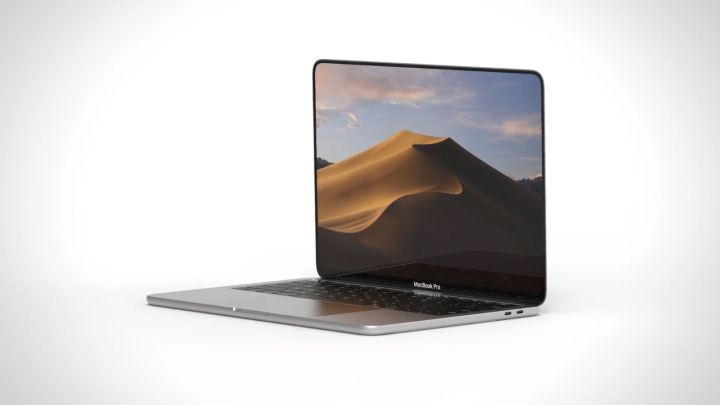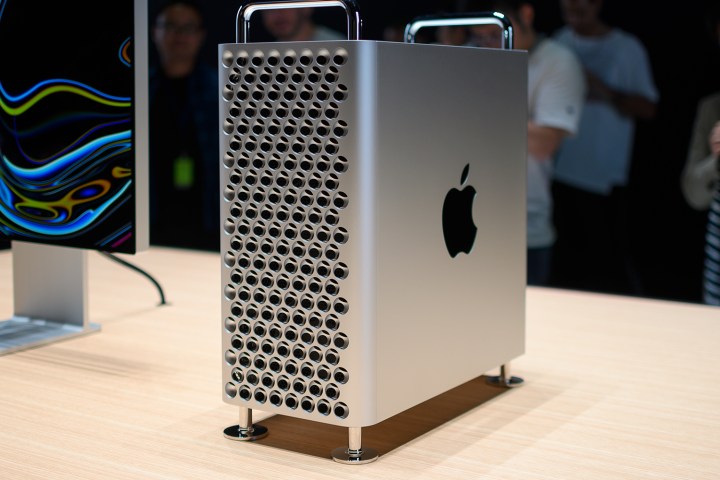Apple has held a special event in October almost every year since 2011, with 2015 and 2017 being the only exceptions. The Mac has featured at every one of these events except the 2011 show in some capacity. With all the rumors about a new 16-inch MacBook Pro in the air, the event seemed like a sure bet.
We were expecting an October 2019 event from Apple featuring new products, but recent reports have cast some doubt on the likelihood of such an event happening. As we’re now in the final week of October, all hope for some sort of a press event has been dashed.
AirPods Pro jump the shark

Rumors began to emerge earlier this year about what would eventually get called the AirPods Pro. These new wireless, noise-canceling earbuds were leaked early, rumored for an October 2019 release date. If Apple had been planning an event, they would have no doubt been spotlighted. But instead of having some kind of media event, Apple has announced the new product with a simple press release.
Despite having just launched the AirPods 2 this Spring, Apple had been hard at work on a new version of its wireless earbuds. The AirPods Pro embrace both a fully in-ear design and noise-cancelling technology. The new earbuds are also the first AirPods to get an official IPX4 water resistance rating.
Rumors about the product had been swirling for months, but the recent report from China Economic Daily confirmed some of the key features of these new wireless earbuds. Most surprisingly, the report bumped up the timeframe from Spring 2020 to October 2019, which placed it right in time for the proposed late October press event.
The report also indicated a price of $260, which would make it spendy though not entirely out of the range of some of its competitors. For example, Apple’s own Powerbeats Pro true wireless earbuds debuted at a similar $250, since having been cut down to $199.
New rumors rekindled hope

Contrary to what previous reporting indicated, some new info had come to light that indicated Apple still had plans to hold an event in October 2019.
First, a report from China Economic Daily confirmed not only the existence of the rumored $260 AirPods Pro, but also a launch timeline set for the end of October. The product was previously rumored for a March 2020 release.
On the same day, an image was spotted in a new build of MacOS Catalina 10.15.1, that seemed to show a visual reference to the new 16-inch MacBook Pro we’ve been awaiting. The model number for the new laptop was MacBookPro16.1, which could confirm the screen size of the laptop. On the other hand, Apple’s numbering scheme doesn’t typically follow screen size as the current 15-inch MacBook Pro is know as “13,3.”
Neither of these rumors are a home run, but they do have us curious about what’s ahead. With October nearly over, any kind of press event has been ruled out. A recent report from a reliable source indicated that the rumored update to the MacBook Pro and iPad Pro may no longer be due for a 2019 release. Instead, the forecast is that these products will be moved to an early 2020 launch.
16-inch MacBook Pro

Apple’s much-rumored 16-inch MacBook Pro was a big fat no-show at its September event, but that wasn’t too surprising. Apple usually has so much to cram into its September events, with iPhones, iPads and Watches all usually making an appearance, that there isn’t much time for the Mac. That was the case this year.
Still, given the sheer volume of rumors swirling around the 16-inch MacBook Pro, we’d expected it to make an appearance in October. Even if it gets delayed to Spring 2020, what exactly are we looking out for?
Well, word has it that Apple is going to completely overhaul its 15-inch MacBook Pro, giving it much thinner bezels so that the display can expand to 16 inches diagonally. That’d make it Apple’s largest display on a MacBook Pro since it phased out the 17-inch MacBook Pro in 2012.
It’s also possible that a new scissor-switch keyboard will replace the much-troubled butterfly keyboard in current MacBook Pro models. This will supposedly be a custom design from Apple that comprises several durable layers and light-emitting elements in an attempt to be both long-lasting and thin. At the same time, Apple has also been patenting refinements to the butterfly keyboard, so it’s possible we could just see another iteration of the current design.
Finally, it’s likely the 16-inch MacBook Pro will come with Intel’s 9th-generation Coffee Lake-H Refresh chips. Although Intel has recently launched its 10th-generation processors, they probably won’t get wide availability until 2020, which would be too late for Apple if it’s going to announce the 16-inch MacBook Pro this October.
iPad Pro

Although Apple debuted a brand-new 7th-generation iPad at its September event, the iPad Pro was noticeably absent. As with the MacBook Pro, that’s not too surprising seeing as Apple saved the iPad Pro for its October event in 2018.
So, what could we see in a new iPad Pro? The biggest news is that Apple will supposedly bring the triple-lens camera system of the iPhone 11 Pro and iPhone 11 Pro Max to the iPad Pro. This idea originates with tech website Sonny Dickson, which claims to have received a “final design mockup” of the iPad Pro from “a source that has repeatedly been reliable.”
The lens design in this mockup is noticeably different from that on Apple’s latest iPhones, however. Rather than the triangle arrangement seen on the iPhones, with a flash much smaller than the device’s lenses, the Sonny Dickson mockup shows the lenses and flash arranged in a square shape and all being roughly the same size. Whether this adds to or detracts from the leak’s authenticity, only time will tell.
Other iPad Pro rumors have been thin on the ground, aside from Bloomberg reporting that both the 11-inch and 12.9-inch iPad Pro models will get minor processor bumps this year, as well as “upgraded cameras.” These will both be “similar upgrades” to those found in the new iPhones, lending weight to the Sonny Dickson leak.
Mac Pro and Pro Display XDR update

At WWDC in June 2019, Apple spilled the beans on its totally redesigned Mac Pro, as well as the all-new, all-powerful Pro Display XDR. With Apple showing off every minute detail on both devices, we don’t expect it to be hiding any major surprises up its sleeve for October.
However, there is the issue of both products’ release dates. At the moment, Apple’s website only says both the Mac Pro and the Pro Display XDR will be released “this Fall.” We therefore think there’s a strong possibility Apple would have announced the availability of both at an October event, with them perhaps going on sale a roughly week after the event, as often happens with other Apple launch events.
With the AirPods Pro having gotten an October 30 release date, we wouldn’t be surprised to see the Mac Pro and XDR Display get announced for launch on that same day.
iMac Pro

Launched in 2017, the iMac Pro was Apple’s first proper attempt to lure back serious professional users since 2013’s Mac Pro. Whilst it was a killer machine two years ago, the world of tech moves fast, and the upcoming Mac Pro is making the iMac Pro look a little long in the tooth.
October 2019 would have be a good time for Apple to announce a spec bump for the iMac Pro to stop it getting left behind by the modularity — and sheer power — of the Mac Pro. For example, the best processor you can equip the iMac Pro with right now is an 18-core 2.3GHz Intel Xeon W chip. Pretty good, right? Well, the Mac Pro can be configured to come with a 28-core 2.5GHz Intel Xeon W processor.
We don’t expect the iMac Pro to get quite that much power due to its thermal constraints (it’s a thin machine, after all), but a more recent, more powerful processor is a must. Specifically, Intel’s Cascade Lake X chips are due out this year, so it’s entirely possible they’ll be making their way into an updated iMac Pro.
We wouldn’t expect many other changes though — a small graphics bump here, a higher RAM configuration there — and definitely won’t be seeing a new design this year (despite the iMac’s current look being with us since 2012).
StudioPods, a Tile competitor, and more
As always, there are a number of rumored Apple products that could have made an appearance at an October event. In particular, there are a couple of audio products that could have gotten some stage time.
Along with the AirPods Pro, Apple’s rumored over-ear headphones, the StudioPods, could also have made an appearance. They could easily have been paired up with a new MacBook Pro or Mac Pro fairly easily for the “Pro” market.
Lastly, some kind of a Tile competitor is said to have been in the works for a while now. Though it would have made sense that these were launched with the iPhone 11, MacOS Catalina does now include the Find My app, which could be a good excuse to launch a Tile competitor that lets you track items such as wallets or keys.



